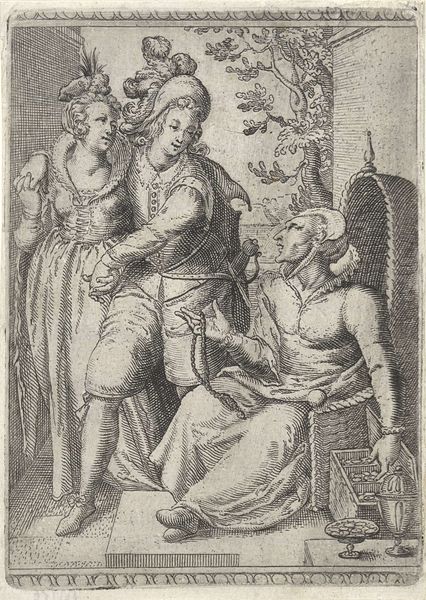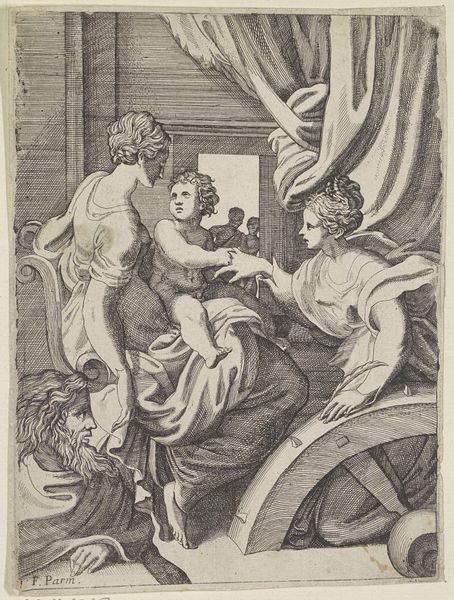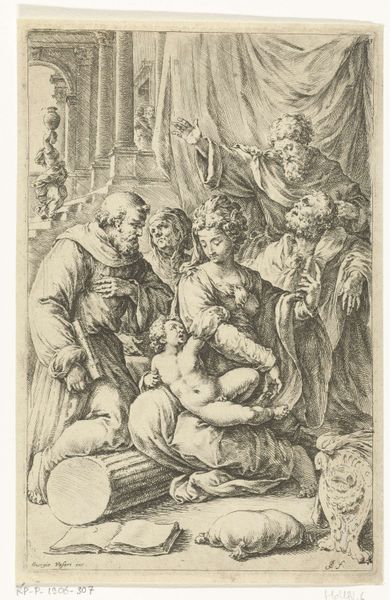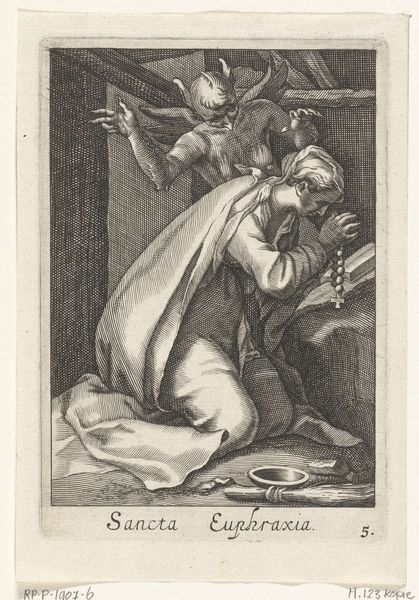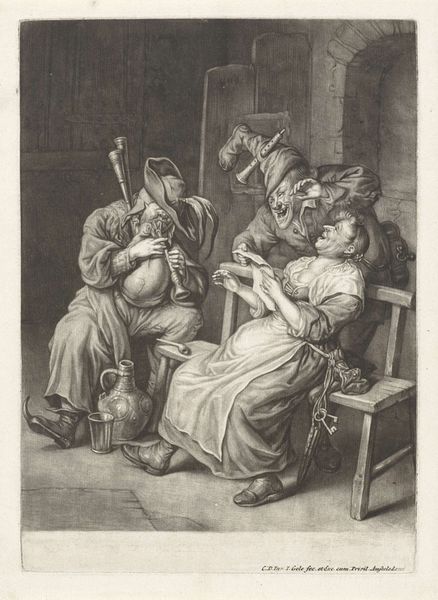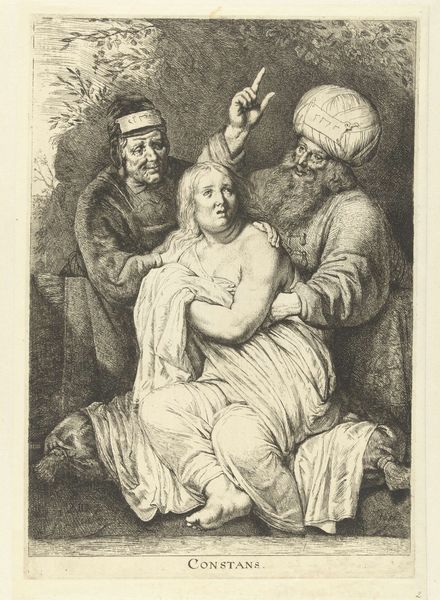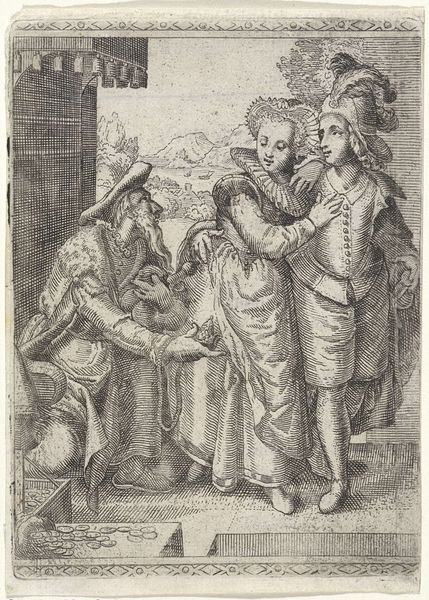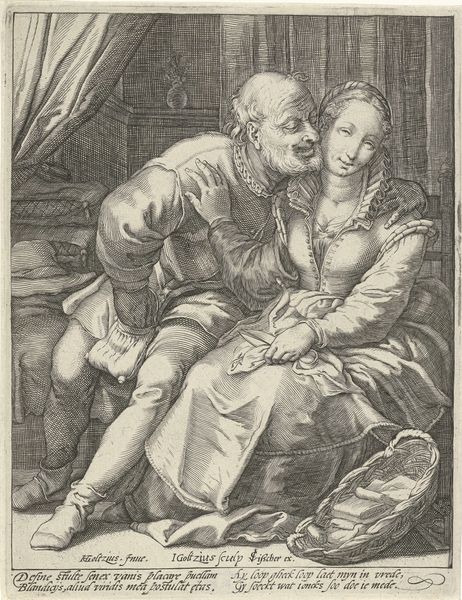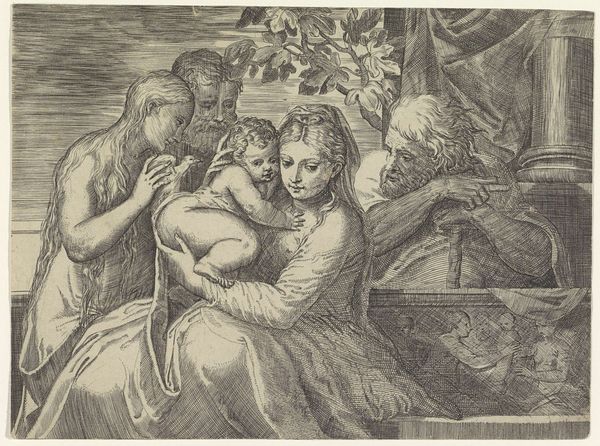
print, engraving
#
portrait
#
baroque
# print
#
figuration
#
genre-painting
#
history-painting
#
engraving
Dimensions: height 314 mm, width 231 mm
Copyright: Rijks Museum: Open Domain
Alexander Voet the Younger created this print, "Judith with the Head of Holofernes," sometime in the latter half of the 17th century. It represents a scene from the Book of Judith, where the Jewish heroine Judith seduces and then beheads the Assyrian general Holofernes to save her people. Made in the Netherlands during its Golden Age, this print reflects the cultural and religious tensions of the time, caught between the desire for peace and the ever-present threat of war. Prints like this one were often used to spread political messages and moral lessons, and the story of Judith would have been familiar to most viewers. The representation of Judith as both beautiful and strong, with a sword in her hand, challenges traditional gender roles and asserts the power of women in times of crisis. As art historians, we can study this work alongside other prints, pamphlets, and political writings to better understand the complex social and cultural landscape of the Dutch Golden Age, and what role art played within it.
Comments
No comments
Be the first to comment and join the conversation on the ultimate creative platform.


